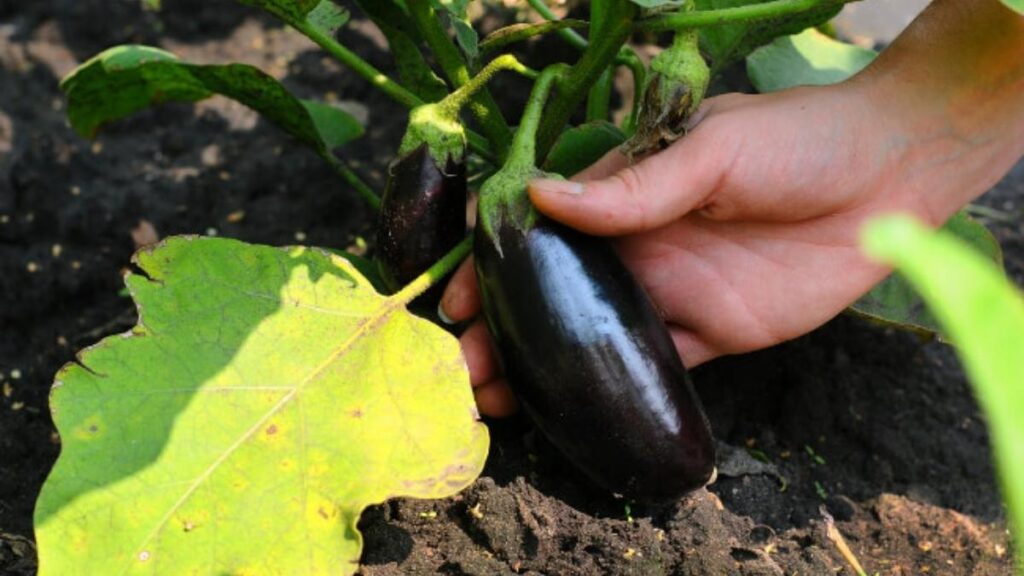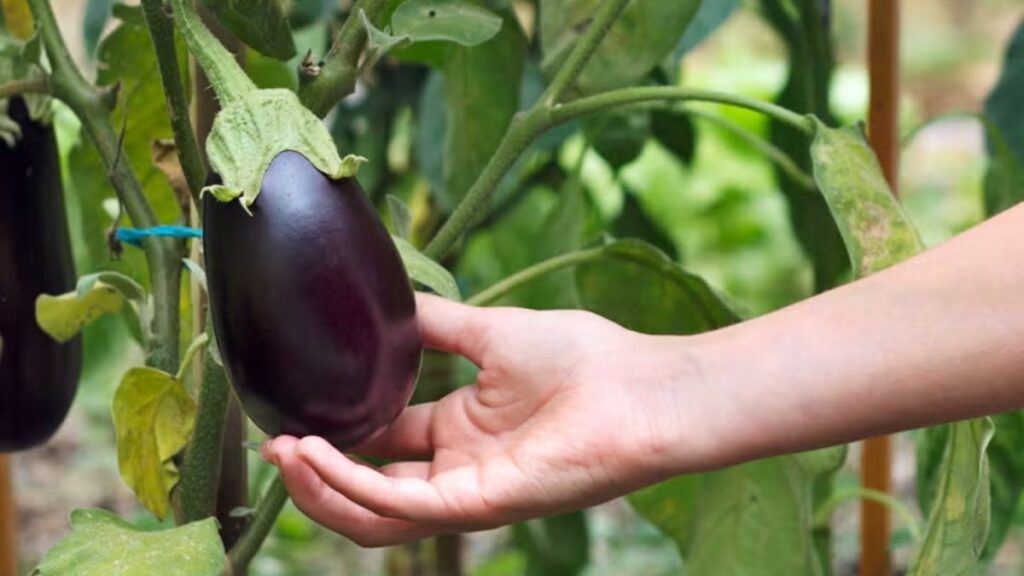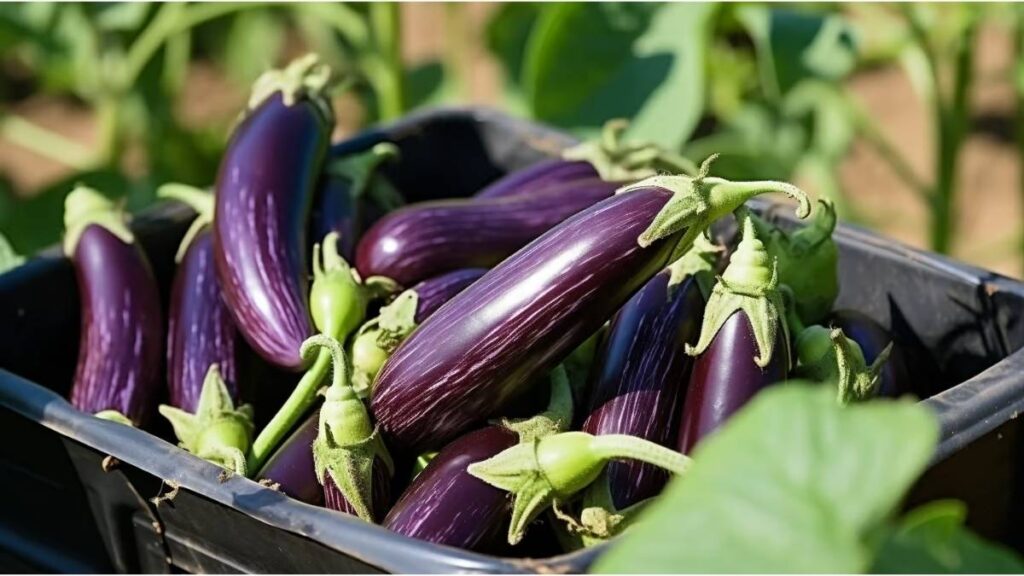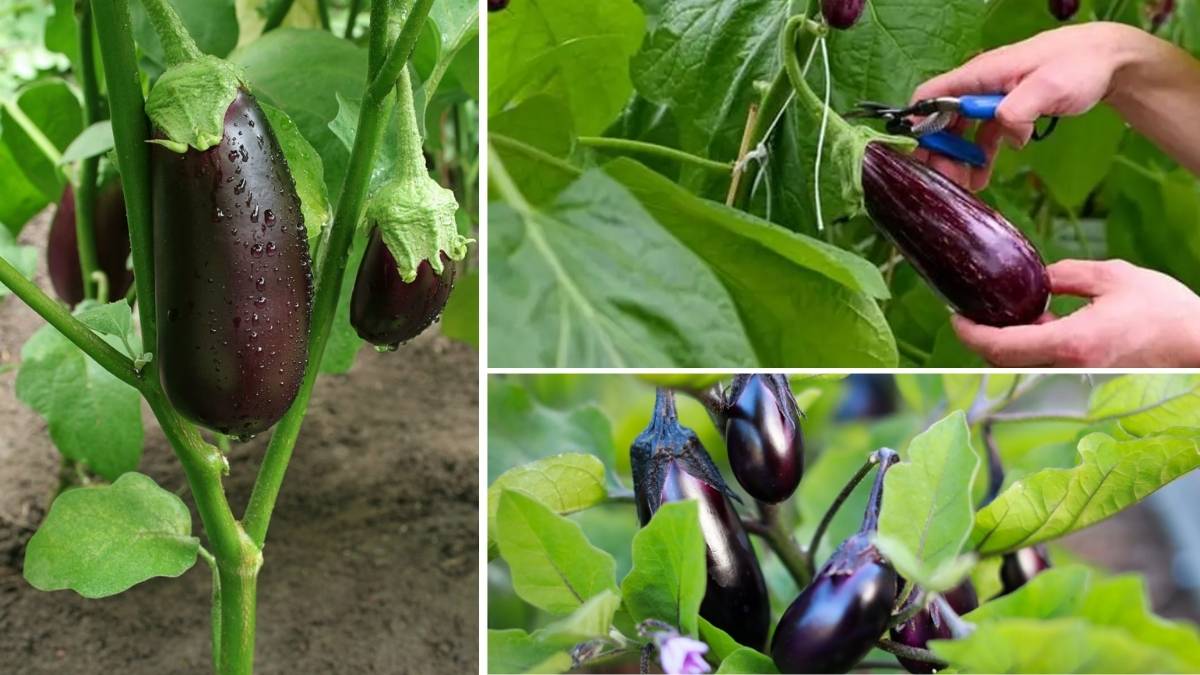Eggplant, also known as aubergine, is a popular vegetable that adds depth and richness to various dishes. To get the best flavor and texture from your eggplants, proper harvesting is crucial. Picking them at the right time ensures a delicious, tender product that will elevate your cooking. This guide will take you through the steps of harvesting eggplant for maximum flavor and freshness, providing you with everything you need to know.
Step 1: Know the Right Time to Harvest
The first step to harvesting eggplant is recognizing when it’s ripe. Eggplants come in various sizes, colors, and shapes, depending on the variety. However, there are general signs you can look for to determine if they are ready to be harvested.

One of the best indicators is the color. For most varieties, the fruit should have a deep, rich color. If the eggplant has a dull or faded appearance, it’s likely overripe. At the same time, avoid picking eggplants that are too small. You want them to be firm but slightly soft to the touch.
Another test involves gently pressing your finger against the skin. If it leaves an imprint, the eggplant is ripe. If the skin bounces back, it needs more time on the plant.
Step 2: Inspect the Skin for Shine
Eggplants should have a smooth, glossy skin when they’re ready to harvest. If the skin looks wrinkled or leathery, the eggplant is overripe. Healthy eggplants have a vibrant shine and feel firm when gently squeezed. The skin should also be free from blemishes or cracks. If you spot any, it may indicate that the eggplant is not in the best condition for eating or storing.
Step 3: Check the Size of the Fruit

While eggplants come in different shapes and sizes, it’s important to harvest them when they’ve reached their full size for the best taste and texture. If you’re growing a small variety, the eggplant might be ready to harvest when it reaches the size of a tennis ball. Larger varieties typically reach the perfect harvesting size when they resemble the size of a grapefruit.
Do not wait too long before harvesting, as overripe eggplants can develop large seeds and a bitter taste. Aim for a balance between size and ripeness to get the best flavor.
Step 4: Use the Right Tools
Once you’ve identified the perfect time to harvest, you’ll need to gather the right tools. A sharp, clean knife or pruning shears works best for cutting eggplants from the plant. Avoid pulling the fruit off by hand, as this can damage the plant and the fruit itself. A clean cut is essential for minimizing the risk of disease transmission and ensuring the plant stays healthy for future harvests.
Step 5: Cut the Eggplant from the Plant

To harvest the eggplant, carefully cut the stem about an inch above the fruit. Be gentle as you handle the fruit, since eggplants can bruise easily. If you’re using scissors or pruning shears, make sure to cut cleanly without crushing the stem. Leave a little bit of stem attached to the eggplant to help it stay fresh longer.
It’s important to be cautious when handling the plant, as pulling or twisting the eggplant can damage the fruit or stem. Always cut the stem neatly to prevent any harm to the plant.
Step 6: Harvest in the Morning
For the best taste and freshness, it’s recommended to harvest eggplants early in the morning, after the dew has dried but before the sun gets too hot. The cooler temperatures help preserve the flavor and firmness of the eggplants. If you harvest in the heat of the afternoon, the fruit might lose some of its moisture and develop a less desirable texture.
Step 7: Harvest in Small Batches

If you have multiple eggplants growing on the same plant, it’s better to harvest them in small batches rather than all at once. This approach prevents the plant from becoming stressed and encourages the growth of additional fruit. Picking a few ripe eggplants at a time allows the plant to continue producing more without compromising its overall health.
Step 8: Handle with Care
Eggplants are delicate, and improper handling can lead to bruising or spoilage. After cutting the eggplant, place it in a soft container or basket lined with paper towels. This will absorb any excess moisture and prevent the eggplants from rubbing against each other, which can cause skin damage.
Avoid stacking the eggplants too high or pressing them against each other. The more care you take during harvest, the better your eggplants will taste and last.
Step 9: Store the Eggplants Properly

After harvesting, it’s important to store the eggplants properly to retain their flavor and freshness. Eggplants should not be refrigerated immediately after harvest unless they’re fully ripe. If they are still a little under-ripe, leave them at room temperature for a few days until they reach full ripeness.
To keep them fresh longer, store eggplants in a cool, dry place out of direct sunlight. Eggplants tend to spoil quickly if exposed to excessive heat or humidity. You can also wrap them loosely in paper towels to help absorb excess moisture and keep them crisp.
Step 10: Use Eggplants While They’re Fresh
Eggplants have a relatively short shelf life, so it’s best to use them as soon as possible after harvest. The flavor and texture of freshly harvested eggplants are unmatched. If you have an abundance of eggplants and can’t use them all at once, consider freezing or pickling them. To freeze eggplants, slice them, blanch them briefly in boiling water, then store them in airtight containers in the freezer.
Step 11: Know When to Avoid Harvesting
Sometimes, you may encounter eggplants that seem unripe or have a slight discoloration. These fruits are usually not worth harvesting as they may taste bitter or have tough skin. Additionally, avoid harvesting eggplants that are soft, overripe, or have visible signs of pests or disease.
Make sure to inspect the eggplants carefully before picking to ensure they are in the best condition possible. The goal is to harvest when they are firm, shiny, and have the perfect color.
Step 12: Continuous Harvesting for Ongoing Yield
Eggplants can continue producing fruit for several months, so it’s essential to keep harvesting them regularly. Frequent picking encourages the plant to produce more fruit and improves overall yield. If you leave overripe eggplants on the plant, they can cause the plant to slow down production or even become stressed.
By staying on top of your harvest, you can enjoy a steady supply of eggplants throughout the growing season.
Conclusion
Harvesting eggplant at the right time is key to enjoying the best flavor and freshness. By following these simple steps observing ripeness, using the right tools, and handling the fruit with care you can ensure that your eggplants are always at their peak. Remember to store them properly and use them quickly for the best culinary experience. Happy harvesting!




